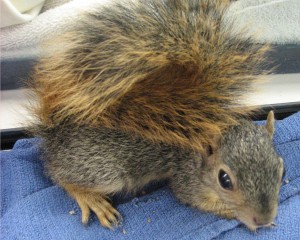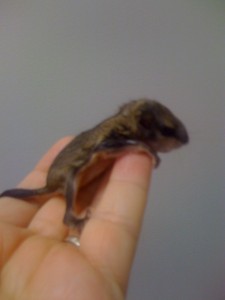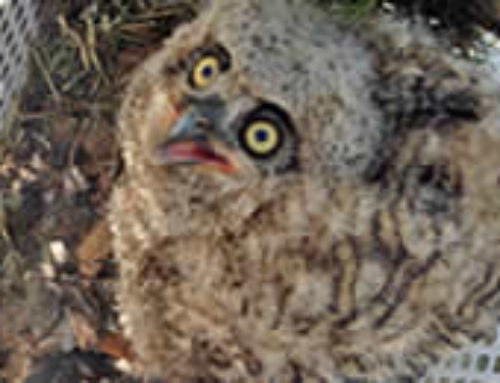Squirrelly –adjective; eccentric, cunningly unforthcoming, reticent, odd, crazy, unpredictable, jumpy, restless or nervous…….a pretty unflattering description all things considered. However, the adjective actually describes behaviors that with respect to evolution are extremely advanced.
Blessed, or perhaps cursed with a high metabolism, squirrels preferentially select nuts and seeds that are high in protein and fat. Squirrels can’t digest cellulose, so they can’t graze like rabbits or deer. Early spring is the hardest time of year because stored nuts have been eaten, rotted or sprouting, but new sources are not yet available. While they appear to be vegetarian, squirrels adore a nice crunchy June bug or cricket. Prone to metabolic bone disease, squirrels are drawn to sources of calcium. Small prey, chewing on bones or shed antlers provide this necessary mineral.
Since squirrels do not form packs for cooperative hunting, it is surprising they have evolved extremely sophisticated means of communication. Body language is a large component (especially tail flagging) of this communication, but squirrels also have a huge range of vocalizations, many of which are mistaken as birds or insects.
Rarely are squirrels observed swimming, but swim they do and quite well at that! A startled rehabilitator discovered just how well they swim when a recently released Ike survivor crossed paths with the big yellow dog that was “guarding” the pool. Panicked the squirrel would drown (or the dog would jump in after it) she grabbed a cleaning net only to watch it swim across the pool, jump out and scoot through the fence! Many swimming pools inadvertently become death traps. To prevent a tragedy, simply leave a temporary ramp that will allow the animal to easily climb out.
Hypothermia can kill babies that fall from their drey, even in the heat of summer. Unless the baby is warm to the touch, it needs a source of heat. A drink bottle filled with hot water or a rice filled sock which is heated in the microwave can provide warmth for an hour. Place the baby in a small box that is placed near the tree for the mother to retrieve. Give mom an hour or two. Do not try to feed or give fluids to the baby. After Hurricane Ike many squirrels were cared for by well meaning people that caused potentially fatal inhalation pneumonia.
Even if you never see them, proof that flying squirrels are nearby can be found in their unique method of eating whole nuts. Flying squirrels gnaw a small circular hole at the pointed end of the nut and scoop out as much as they can before moving to the next. Regular squirrels smash whole pecans and acorns, leaving shards everywhere.
Naming squirrels by their coat colors can often be misleading since both the gray and fox can vary from an almost white blond to coal black. Colonies of black squirrels exist in the northeast, mid-west, down the Appalachian Mountains and across the upper gulf coast. New Mexico and California also boast of colonies. The Heights in Houston even have a colony! Scientists have found that black squirrels arise from a single mutation and the mutation is dominant. Squirrels that homozygous (received a mutated gene from both parents) are a deep glossy black, while the heterozygous (received one mutated gene and one normal gene) show other colors (brown, red or silver) evenly distributed in the coat.
The eastern fox squirrel is on average thirty to fifty percent larger than the eastern gray, but without the other to compare to, size is relative. Weight is highly proportional to diet, but, eastern fox squirrels are usually a really heavy two pounds, pushing three; while the eastern grays are usually over one pound, but rarely over two. Their coat color is similar, but the tail and belly are strikingly different. The tail of a gray will be twitching and flashing so much it may be hard to appreciate the beautiful bright silver that tips each hair, the fox will probably be munching on something with its tail calmly curled against its back so it will be easily seen that each hair is tipped in rich reddish brown. The belly of the eastern gray ranges from bright white to a warm creamy white; while the fox has a belly that ranges from a warm light tan to almost orange.
The fox squirrel tends to be more of a loner, they don’t seem to mind other squirrels nearby, but they aren’t going to waste energy with aerial acrobats unless it is breeding season. They tend to freeze and hunker down in the face of an intruder. When threatened, they will run up the nearest tree and again freeze to prevent detection. Fox squirrels are much more likely to be heard making soft, happy grunting/snuffling sounds as they forage.










Leave A Comment